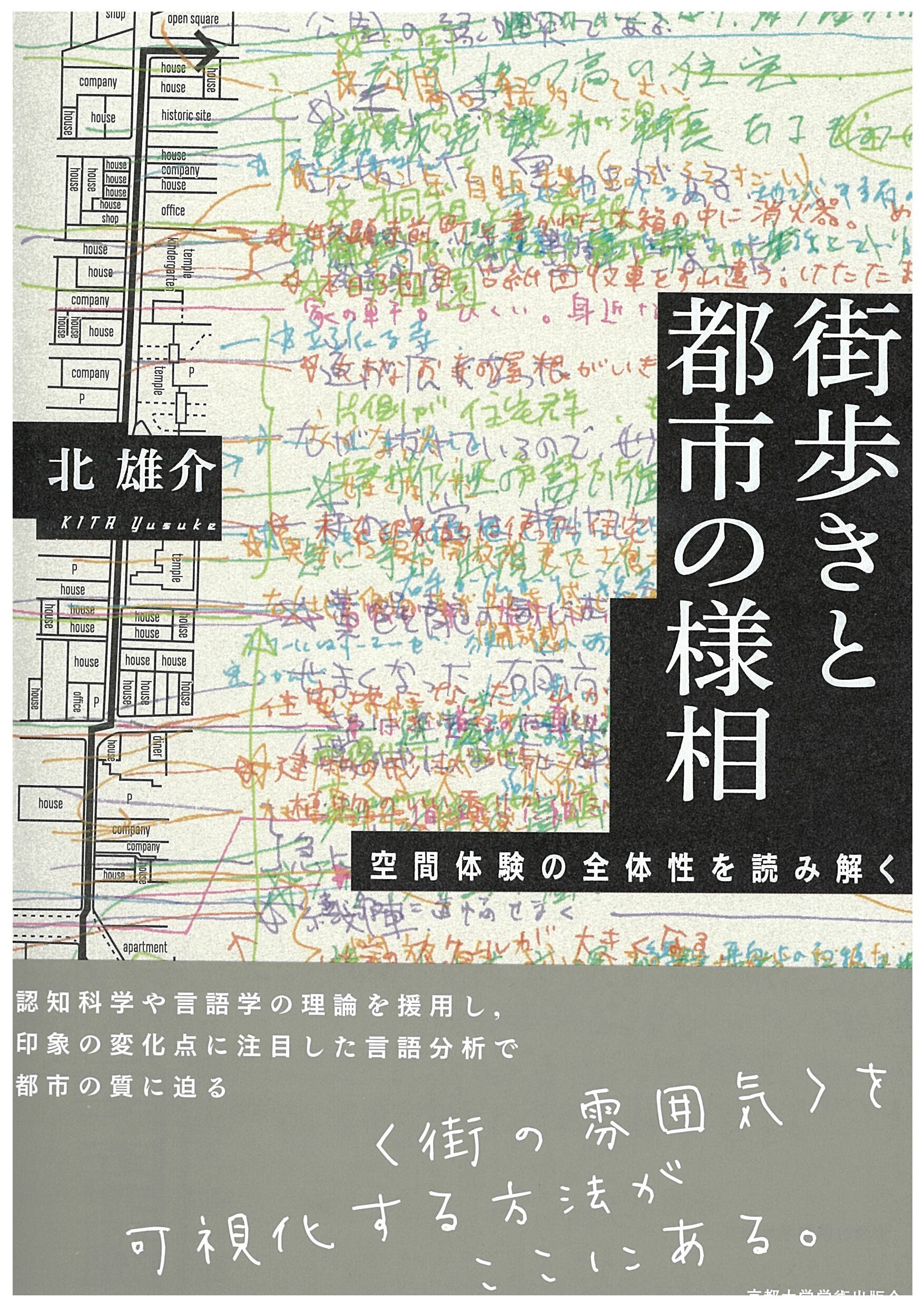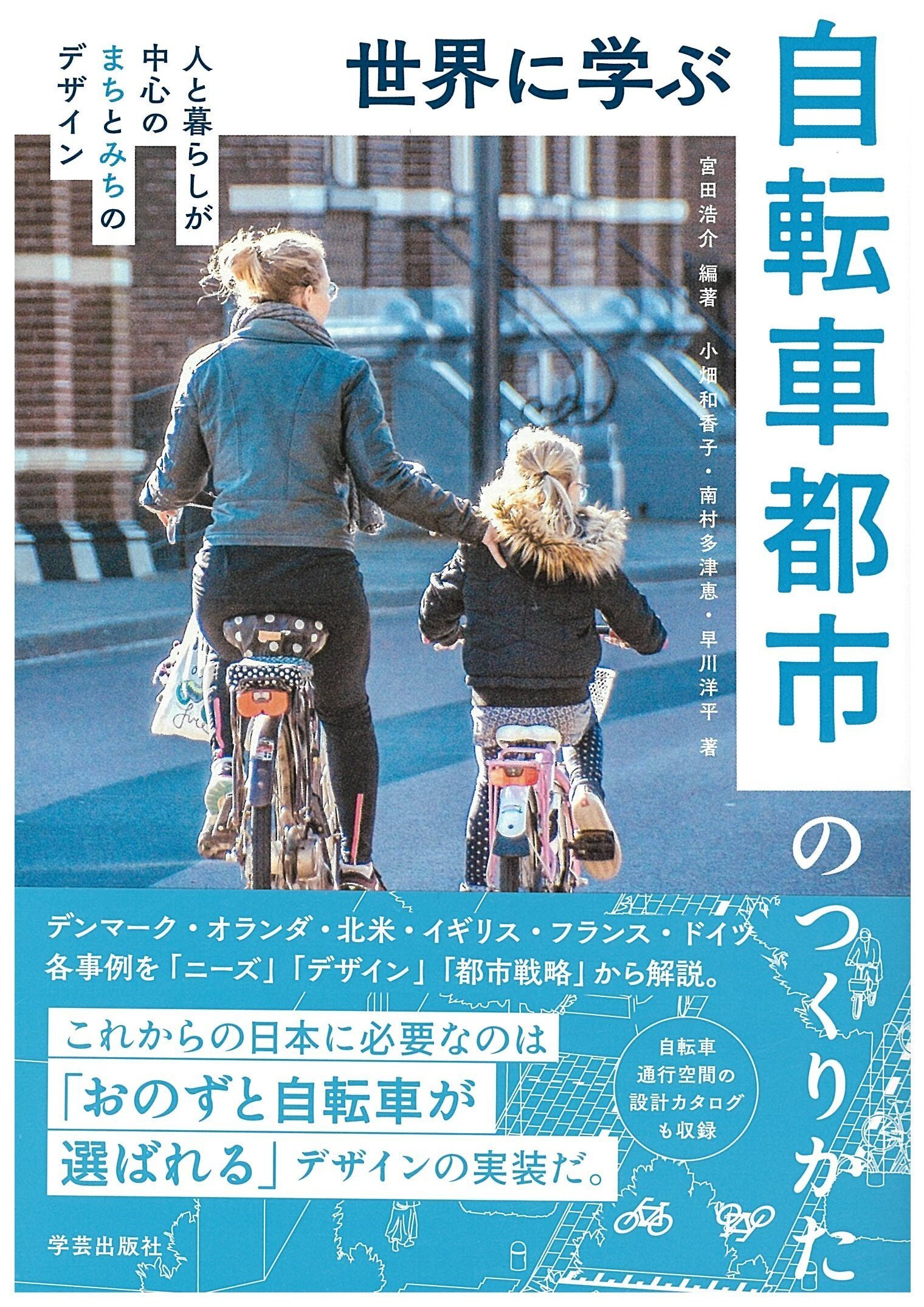No.46 In 2024
Literature Award 1
Title
City Walks and Urban Landscapes: Interpreting the Wholeness of Spatial Experience

Recipient
Yusuke Kita
Reason for award
This book consolidates the author's research, which revolves around "writing words while walking" to capture the overall and comprehensive feel of a city. The work is organized across three layers -- theory/methods, experiments, and implementation -- drawing on design studies and cognitive science. While city walking is widely used as a tool in community building for disaster prevention and scenery enhancement, it often remains a mere exchange of impressions without a solid theoretical framework. Practitioners typically structure those impressions through expert experience, placing the method closer to art than to science.
Attempting to verify the concept of walkability from a modal perspective, the book takes on a significant academic challenge. First, it systematizes the author's theory for describing and interpreting the physically perceived city through modalities, then compiles applied studies. The goal is to construct a new methodology for understanding cities that differs from conventional data driven scientific approaches. Further research and practice will be needed to firmly establish the proposed method, yet the work already shows promising potential for extension to diverse fields of transport and urban studies beyond city walking.
The book defines modality as "the overall way in which things exist." Its basic model grasps modality by crossing the boundary between areas of differing modalities. Perception of the environment depends on the state of human memory; this internal mechanism is explained through the concept of a frame. Frames vary with each individual's memory and change through walking; modalities are captured through these frames. Based on this theory, the author conducts walking experiments, records modalities in language, and formalizes a method for segmenting and documenting urban areas. The records are then analyzed--using graph representations and factor analysis--to reveal the modalities of each area and the underlying structure of the city.
By standardizing the process of capturing urban modalities through walking, the book makes the practice reproducible for anyone. Because the identified modalities depend on participants' frames, many issues remain before the method can be fully applied in real world community planning--such as ways to assess participants' frames and to provide prior knowledge. Nevertheless, the attempt to reconstruct what was once an artistic activity (city walking) as a reproducible scientific method is highly valued for its academic significance and future potential.
Literature Award 2
Title
Learning from the World: Designing Bicycle-Friendly Cities with People and Livability at the Core

受賞者
Kosuke Miyata, Wakako Obata, Tazue Minamimura, Yohei Hayakawa
Reason for award
This book presents practical pathways for building cities that place the bicycle at their core.
The authors acknowledge that Japan already enjoys one of the world's highest bicycle mode shares, yet argue that achieving a truly sustainable society still demands further growth in cycling. To that end, they stress the need for user centred infrastructure.
The volume is divided into two parts.Part I surveys leading and emerging cycle friendly cities in Europe and North America--Copenhagen, the Netherlands, New York, London, Paris, and Germany. Using the three lenses of "Needs," "Design," and "Urban Strategy," it examines how cycling weaves into everyday life, the importance and maturity of supporting infrastructure, and the policy stance and future outlook in each city. Part II opens with an on the ground example from Shiga Prefecture, then discusses Japan's overall cycling culture, current conditions, and challenges. Through concrete cases it shows how collaboration between citizen groups and government can accelerate and streamline problem solving. The section closes with illustrated design principles for bicycle space, drawing on lessons from cycling pioneers such as the Netherlands and, more recently, the United States.
The book is commendable for several reasons:
- Abundant practical case studies from Japan and overseas. A wealth of photos, graphs, diagrams, and references makes the realities of bicycle cities easy to grasp.
- Systematic analysis that goes beyond simple description. By organising content around Needs, Design, and Urban Strategy, the book lets readers grasp success factors and challenges in three dimensions--information directly applicable to urban planning practice.
- A chapter on Japan's cycling culture and policy reveals a critical gap: Japan's high mode share is largely a by product of compact trip distances rather than well developed infrastructure. It advocates a concrete remedy--"traffic calmed neighbourhood streets plus world standard cycle tracks"--offering valuable insights for future planning.
- The illustrated chapter on bicycle traffic space design ranges from fundamental principles to detailed specifications, giving it clear practical value.
By demonstrating the potential of bicycle centred urbanism and outlining actionable methods to make it reality, the book delivers insights useful to researchers, policy makers, and citizens alike. For these strengths, it is judged fully deserving of the International Association of Traffic and Safety Sciences Award, Publications Category.
